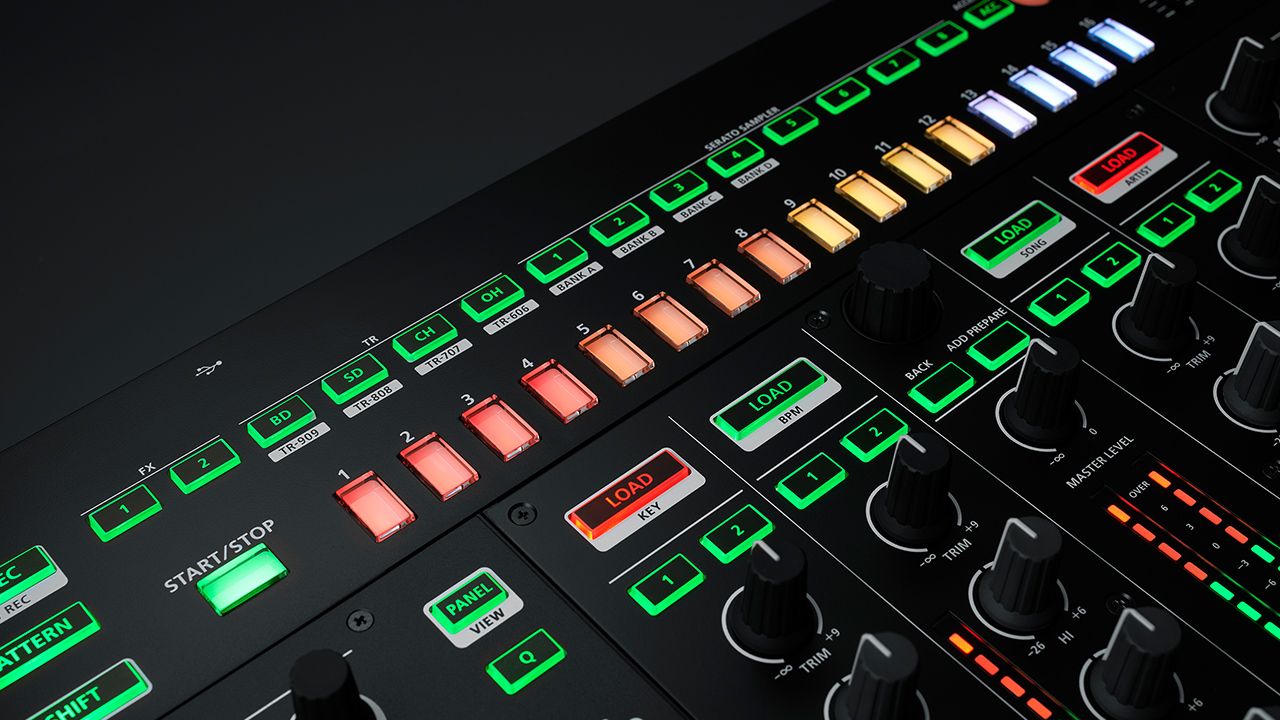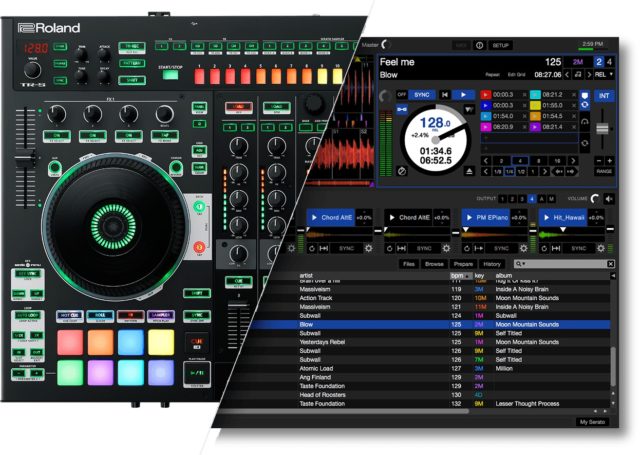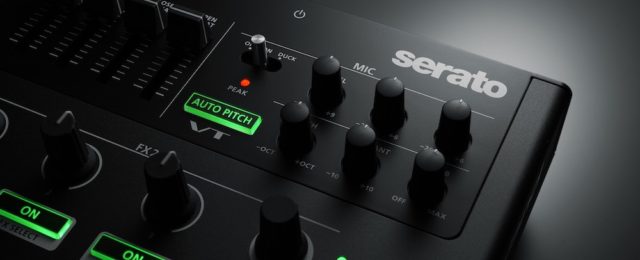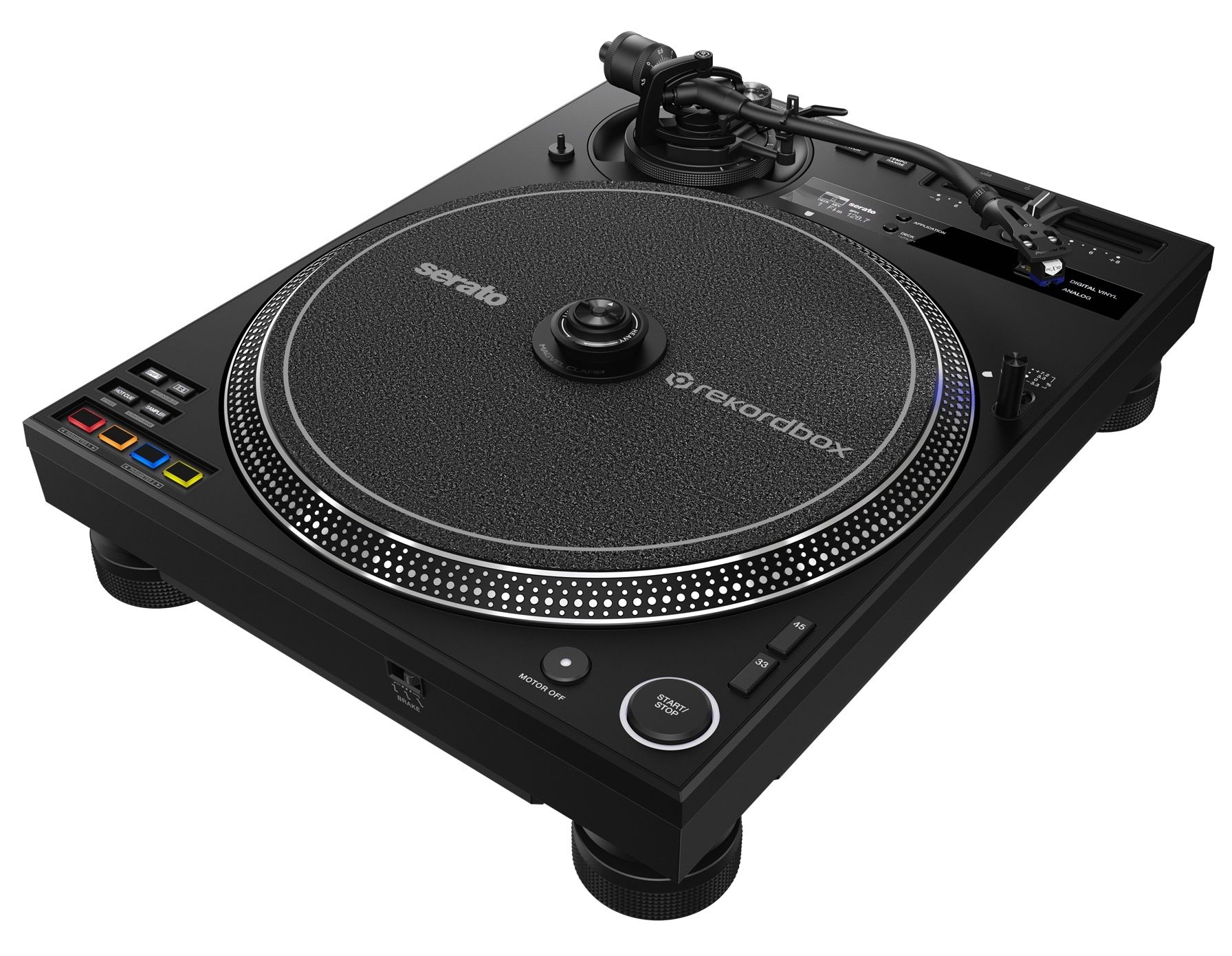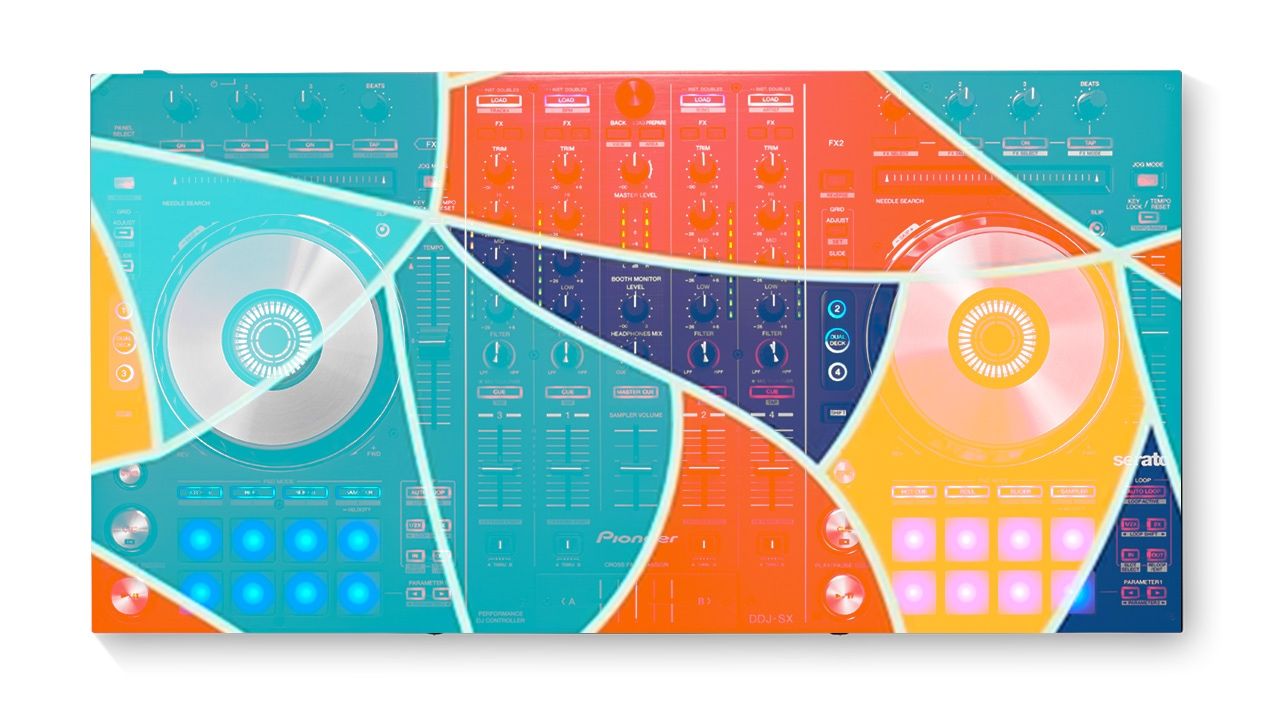Last Friday, Roland launched one of their first-ever DJ focused products, the DJ-808. It’s a controller for Serato DJ – but with a built-in step sequencer and a few other features, it’s much more. Roland allowed DJTT to check the controller out in person, read on for an exclusive video and our thoughts.
DJ-808: First Look Video
- Gear: DJ-808 controller
- Manufacturer: Roland (designed in collaboration with Serato)
- Price: $1,499 (street price)
- Availability: Fall 2016 – final date TBD, (signup here to be the first to know when units are in stock)
All-in-one digital DJ controllers are approaching a full decade of existence (the VCI-100 launched in 2007), and the level of innovation we’ve seen on recent releases has started to dwindle. With their new DJ-808 controller, Roland and Serato are aiming to be the exception to that. It’s a familiar four-channel DJ controller layout, but a step sequencer and a few advanced features shine through.
Here’s a closer look at what the DJ-808 is capable of:
TR-S: DJ-808’s Drum Machine + Step Sequencer

This is the crown jewel of the DJ-808 controller. The TR-S has two halves to it – a standalone drum machine and a MIDI sample sequencer. The integrated TR drum machine has Bass Drum, Snare Drum, Hi-Hats, and Clap from the classic TR-808/909/707/606 machines. They’re the Analog Circuit Behavior sounds that grace Roland’s AIRA gear.
Each sound can be sequenced on the TR-S’s 16 push buttons, and the volume of each sound can be altered on the fly using the faders to the right of the sequencer. To adjust each sound individually, press the button for one of the sounds and then use the dedicated knobs for attack, decay, and tuning.
The TR-S has 16 patterns that can be saved inside of the unit – even if you’re completely disconnected from Serato, and lose all power, it will remember them afterwards. You can also route the drum machine’s sounds through Serato and apply either FX channel onto it.
Using the performance pads on the bottom of each deck, DJs can perform the TR-S sounds:
- The bottom four pads will play the four active sounds in the TR-S. You can record these into the step sequencer in real-time by pressing “INST REC” in the TR-S section
- The top four pads are velocity sensitive rolls of the same four sounds (push harder and the rate of the sound repeating increases). These can’t be recorded – more designed for on-the-fly fills.
The TR-S can also sequence Serato DJ – see the section below.
Advanced Serato DJ Features
Pioneer’s focus on Rekordbox DJ and the DDJ-R line has been a pretty clear indicator that their relationship with Serato is nowhere near as tight as it was when they were designing the DDJ-S line. Roland’s partnership with Serato for this product means that there are a few industry first features on the DJ-808. Some of the deep Serato integration includes:
- Serato Sample Sequencing: With new MIDI mapping functionality in Serato DJ, Roland is able to sequence Serato DJ’s Sampler banks (which were recently expanded to 4 banks of 8 samples). Only controller with built-in sequencers (like the Midi Fighter Twister) are able to sequence sample decks – and the DJ-808 is the first controller to ever do it with Serato.
- Pitch ‘n Play: Serato took the recent explosion in tone play / MIDI-mapped re-pitched cue points and turned it into a proper feature. The best part is that the cue points are mapped out in key with the track that’s playing – so creating a tone play routine is a breeze.
- “Ultra Low Latency” Jog Wheels: Roland and Serato are purporting that the DJ-808 has some of the lowest latency platters of any device now available. With the kings of MIDI and the scratch-loving software developers on it, it’s more than just marketing hype. The jogs felt really solid in our brief testing, and there’s the added bonus of having visual feedback directly on the jog wheel.
- Velocity Sensitive RGB Performance Pads: Cues, Loop Rolls, Sampler, TR-S, and Pitch Play are all controllable using the performance pads on each deck. Having velocity adds an extra element of expressive control here that other controllers lack.
There’s also DVS support with dedicate inputs – but DJs will need to buy the DVS Serato plugin to use that functionality.
Master Syncing Everything
One of the issues with having so many sources of sounds that are being sequenced together has always been keeping everything in time. Roland are the masters of MIDI (having helped develop it!) and their solution here is to use the DJ-808 as the master clock for everything. DJs can sync Serato decks to the TR-808s sequencer, as well as sync external MIDI instruments.
There are two AIRA LINK USB ports on the back of the DJ-808, which allow you to synchronize other Roland gear with the master clock as well as pass audio into the unit – all with a single cable. If you’re not using gear that has AIRA LINK, you can still sync up with MIDI DIN and an audio cable.
Vocal Transform!
The DJ-808 has a built-in vocal transformer, like an abbreviated version of the AIRA VT-3. It’s not the central focus of the controller, but it for sure is a fun element to it. Plug in your mic and adjust the pitch, formant, and ducking of the mic input.
The super power feature here is the Auto Pitch button – which enables a basic autotune on the mic input, and syncs the key of the autotune to the key of the playing deck in Serato DJ. It works fairly well from what we saw – but unless you’re comfortable singing during your DJ sets already, we suspect many DJs will shy away from using it during a gig.
DJ-808s Mixer + Tech Specs

The mixer on the DJ-808 isn’t just a MIDI mixer, it has a range of inputs and outputs all of which can function independently from Serato DJ. It even has four channel-assignable FX (similar to Pioneer’s Color FX) that are solid DJ mixing tools: Jet, Filter, Dub Echo, and Noise. As with Color FX, turn the knob more and you get a higher level/depth of the effect.
There are a few of-note under-the-hood features on the DJ-808, including the high-spec 96kHz soundcard. Here’s some of the technical specs from Roland on the controller (see the full specs, including impedance/level details, here).
Signal processing:
- Sampling Frequency = 96 kHz, 48 kHz, 44.1 kHz
- A/D conversion: 24 bits
- D/A conversion: 32 bits
I/O
- INPUT (1–4) jacks: RCA phono type
- MIC IN jack: Combo type (XLR, 1/4 inch TRS phone (balanced))
- MASTER OUT 1 jacks: XLR type (balanced)
- MASTER OUT 2 jacks: RCA phono type
- BOOTH OUT jacks: TRS phone type (balanced)
- PHONES jacks: stereo 1/4 inch phone type, miniature phone type
- USB Host ports: USB type A
- PC port: USB type B
- MIDI OUT connector
- DC IN jack
- PHONO GROUND terminal
Dimensions + Weight:
This is on the larger end of controller size – something that you’re going to want a dedicated space for in your home studio. Bringing it to a gig? You’ll for sure want to get there at soundcheck to make room for it.
- Weight: 15 lbs / 6.8 kg
- Dimensions: 26.3″ X 16.8″ X 3.3″ (688 X 427 X 84 mm)
Your Questions, Answered
We noticed that on the original product announcement and around the web, DJs have lots of questions about this new controller. Here’s the answers to some of the most asked questions:
Who Did Roland Work With To Build The DJ-808?
A lot of commenters have wondered about why the DJ-808 mixing and deck sections look similar to other currently-released products, and the answer is fairly simple. Roland teamed up with Serato for this design – so the unit is design to reflect the interface in that software.
There’s been some speculation about other companies like Pioneer or Reloop assisting with the design or manufacturing – but there is no truth to that. The DJ-808 is entirely a Roland and Serato product.
Can I MIDI Map It With (Traktor / Virtual DJ / Other DJ Software)?
While the DJ-808 is a heavily Serato-branded product, but that doesn’t mean that the functionality is locked to that software. The step-sequencer and all other functions are sending out MIDI signals that should be able to be mapped in other software. When we have a full review unit, we’ll dive into this and see what potential exists.
Is there any ducking or compression being done with the TR-S versus other playing track channels?
No – using the TR-S sounds alongside tracks in Serato is much the same as putting an AIRA TR-8 into your setup. There’s no side chain compression for the sounds in the unit.
What software and Serato plugins are included?
There’s a full license to Serato DJ, as well as a Pitch ‘n Time license (this unlocks the Pitch ‘n Play feature and other key-syncing functions like the VT’s autotune)
Where’s the standalone version of TR-S without the all-in-one DJ controller attached?
Great question – we suspect that Roland could be testing the waters with this gear first – and based on feedback, could release future products that take elements of this controller. All the marketing and advertising for the DJ-808 does imply that this is “just the beginning”, so we’re excited to see what other DJ-related gear Roland cooks up!
Have more questions about Roland’s new DJ controller?
Let us know in the comments and we’ll add answers here or reply in line.


